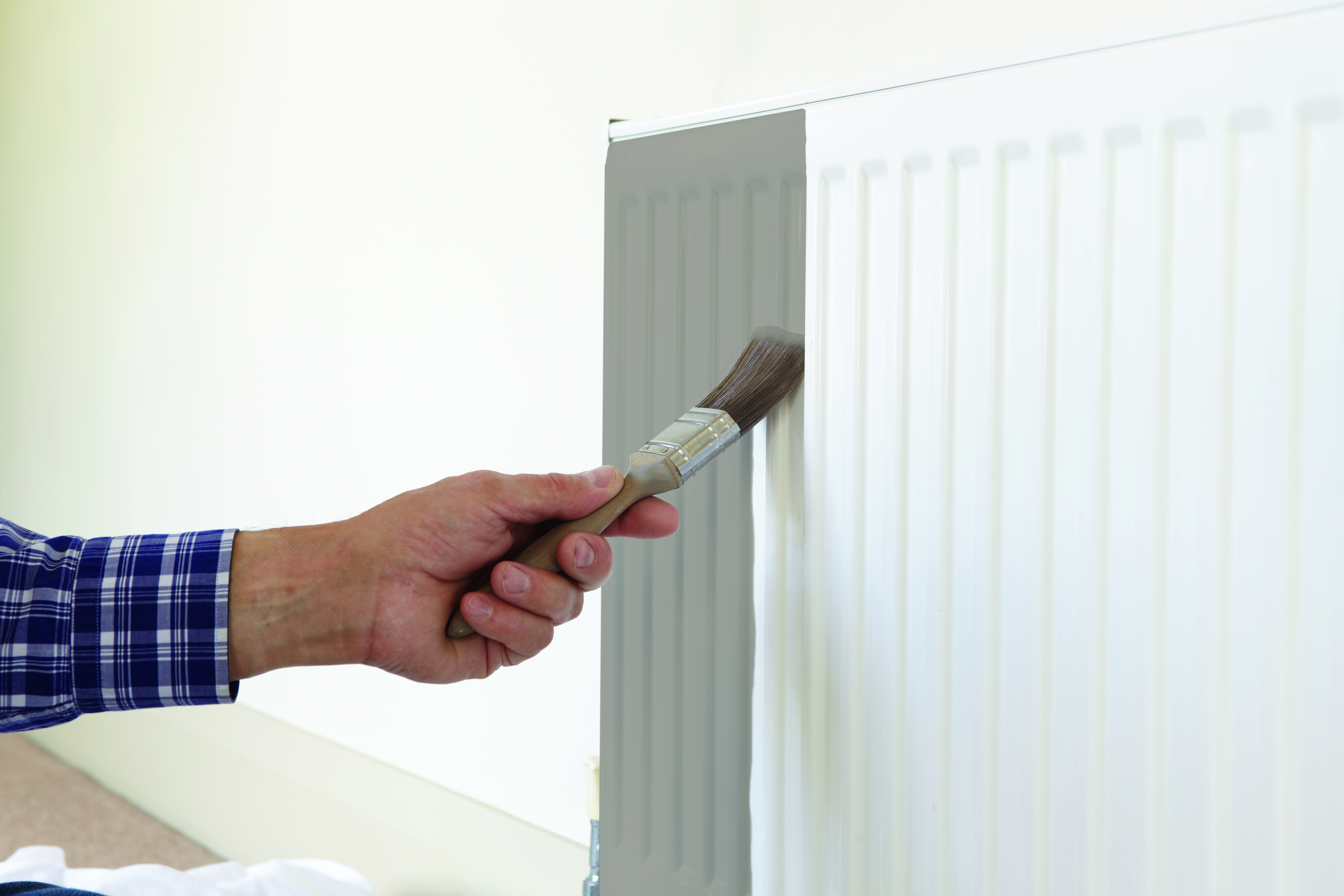
Project overview
How to paint a radiator
Painting your radiators is a great way to protect it and give it a facelift. With the right tools, this is a pretty easy job you can do in an afternoon.
Painting your radiator can turn it into a statement piece, ideal if you’re not a fan of ugly but essential hardware.
What paint can I use to paint a radiator?
Radiators aren’t typical metal appliances, so we don’t recommend you use metal paint.
Instead, use a specially formulated radiator paint. Radiator paint can withstand the temperatures of your radiator, protects the enamel, and sticks to the surface so it won’t peel. You can use radiator paint on any kind including cast iron radiators.
How to paint a radiator
There are two different ways you can paint a radiator, with a brush (or roller); or with a can of spray paint.
We’ll talk you through both methods.
If your radiator is rusty, radiator paint will help cover up the rust and prevent it from spreading. The paint acts as a protective coat and prevents moisture from getting to the metal.

A regular paintbrush or roller is suitable for the side of the radiator that faces outwards
Using a brush or roller
You don’t have to use a radiator roller or brush, but if you want to do the side against the wall, you’ll need to use these. However, you can also take the radiator off the wall to paint it. This will make it much easier to clean and give you greater control when you paint.
A regular paintbrush or roller is suitable for the side of the radiator that faces outwards, but if you leave the radiator on the wall, you’ll need a special brush. Paintbrushes are better for getting into the grooves of radiators, whereas rollers are useful for painting broad flat sections.
- Turn your radiator off and let it cool down completely.
- Sugar soap is fantastic at cutting through everyday dirt, grime and grease. It’s essential in any DIY job and is readily available in spray bottles. Use sugar soap and a scouring sponge to clean your radiator, get rid of all the dirt and dust. Wipe it down with clean water, making sure to clean up any residue.
- Use masking tape or decorator’s tape to cover up valves, vents and generally any areas you don’t want to get paint on. Put down a dust sheet under the radiator to stop getting paint on the floor. If you’ve not taken the radiator off the wall, tape newspaper or a lightweight dust sheet behind the radiator to prevent splashes.
- Use 120 grit sandpaper to sand the radiator lightly. This creates a rough surface that helps the paint stick, giving you a better finish.
- Not all radiator paints need a separate primer; many are a 2 in 1 paint and primer, which saves you time and money. Check the tin of your paint to see if you need to prime first. If you do, apply one coat of your primer and let it dry. Follow the instructions for dry times and coat times.
- Paint your radiator. For the best results, paint the edges first using a small brush. Then move onto the face of the radiator, painting the top and bottom of your radiator, then joining in the middle. Work your way in sections along the radiator, leaving a wet edge and overlapping slightly for the most even finish.
- Let the first coat dry. Check the instructions on your paint for coat times and, if necessary, apply the second coat.
- Wait 24 hours for the final coat to completely dry before turning the radiator back on.

Leave your last coat to dry for 24 hours before turning the radiator back on.
How to spray paint a radiator
Follow steps 1 to 5 mentioned above, making sure you do all the prep. When using spray paint, put down more protective dust sheets than normal and work in a well-ventilated room. This will help to stop paint from getting on your wall and floor and means you can work safely.
- Shake the can until you hear a rattle. Keep on shaking for another minute or so.
- Hold the can approximately 20 to 30 centimetres away from the radiator and spray in a sweeping motion. Cover the whole radiator.
- Wait for the first coat to dry, following the instructions on the can.
- Our radiator spray paint needs three coats for the best finish. Leave 30 minutes between each coat.
- Leave your last coat to dry for 24 hours before turning the radiator back on.


